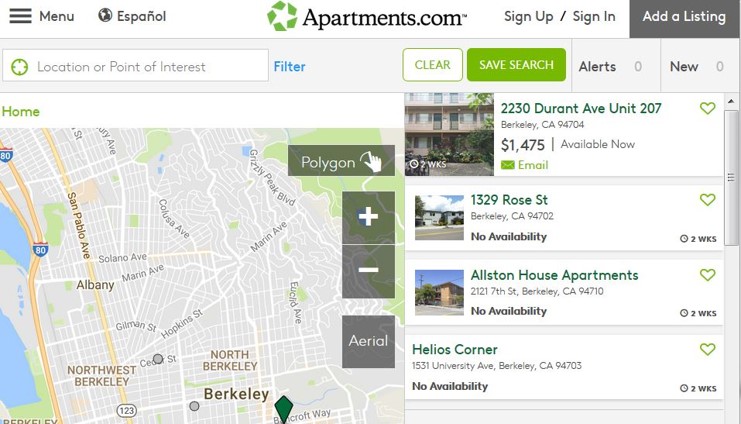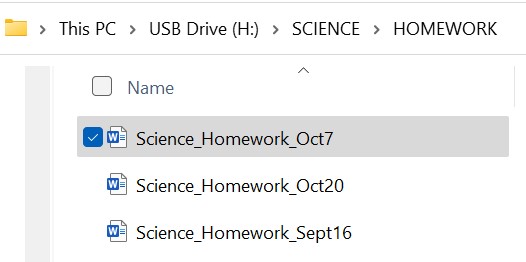32 Organizing Digital Resources
Resources that are “digital” are stored in an electronic format using “bits” that represent either 1 or 0. Any information on the web, on your smartphone or computer, on a DVD or CD, or in any broadcast or download is in a digital format.
Organizing systems for digital resources are often very different than those for tangible resources because of two critical differences between their formats.
- Digital resources can be copied easily, and different copies can be in many places at once, unlike tangible resources that can only be in one place at a time
- Digital resources can move from one place to another extremely quickly
Organizing Resource Descriptions
Taken together, these two differences between digital and tangible resources enable DIGITAL DESCRIPTIONS to be very important in organizing systems because they can serve as substitutes for the resources they describe. Being able to search digital descriptions instead of the tangible resources they describe means that how the tangible resources are organized isn’t that important. The most familiar examples of this idea of digital resource descriptions are library catalogs and search engines, where you can search millions of descriptions in a fraction of a second. The library can decide to organize books by subject, by author, by title, by reading level, or any other properties — and the resource description can point to their storage locations.
Our daily lives are greatly enhanced by using digital descriptions. How long would it take to search through all the books in a library or look at every website to find something you wanted?
USING THE APARTMENTS.COM WEBSITE TO FIND AN APARTMENT NEAR BERKELEY CALIFORNIA

It is hard for students to find a place to live in a college town because there are more students than affordable apartments. It would be impossible if they had to visit every apartment instead of searching through descriptions of apartments on a website like Apartments.com.
Organizing the Web
Even with powerful search engines, it can still be overwhelming to find a site that meets your information needs or entertains you because there are almost 2 billion websites today! But fortunately, you and search engines can take advantage of how the web is organized to make it possible to find what you want.
Every website has an “address” called its URL (Universal Resource Locator). Just as your home address has several parts that identify a specific place within a city and country, a website address also has several parts.
We can explain the parts of a URL using the URL for this book, which is:
https://berkeley.pressbooks.pub/organizing4kids
The “https://” part isn’t really part of the address because it is used by almost every website; it tells the search engine to search for the website using a secure communications method (this would be like saying “use your phone to call this number” before you tell people your phone number).
The text in between the // and the / is the most important part. There are three pieces here for the book URL
berkeley
pressbooks
pub
“pressbooks” is the name of the website. Pressbooks is a company that designed and takes care of the software used to publish books like this one. The “pub” that follows it called the “top-level domain,” which is a complex way of saying “who put this site on the web.” Most websites are created in these TLDs:
com (for commercial organizations, usually businesses)
edu (for educational organizations, usually schools and colleges)
org (for organizations that are not commercial businesses)
gov (for government organizations)
Websites in countries other than the United States often use a top-level-domain that indicates the country. So the company you know as Amazon uses Amazon.com as its website in the US, but uses Amazon.ca in Canada.
“berkeley” here in the book URL explains that the book is published as part of the University of California, Berkeley’s collection of books that use the Pressbooks publishing system.
Finally, the parts of a URL that follow the / are pointing to a folder where the web pages for the book are organized. This is necessary here because there are other books that differ only in this part of the URL. For example, the college textbook called “The Discipline of Organizing” that was adapted for this book has this URL on the Berkeley Pressbooks system:
https://berkeley.pressbooks.pub/tdo4
Organizing Your Personal Digital Resources
Everything stored on a computer is stored in a “package of bits” called a FILE. You might know this if you use applications like Microsoft Word, Microsoft OneNote, Google Docs, or Google Forms to create documents and presentations. To use these applications effectively, it helps to know how to organize the files you create.
 When you first start using a computer, all of your files and applications will appear as icons or symbols on your display, which is called the DESKTOP. This works OK if you don’t have too many. But after a while your desktop will become messy, and it will be hard to find things.
When you first start using a computer, all of your files and applications will appear as icons or symbols on your display, which is called the DESKTOP. This works OK if you don’t have too many. But after a while your desktop will become messy, and it will be hard to find things.
The solution is to create categories for organizing your files. File categories on computers are often called FOLDERS or DIRECTORIES.
A simple scheme for organizing your files is to categorize them by their media type. This means you would have text documents in one folder, photos in another, and music in another. But a better system is to organize your files in categories that match the organization of your school work. In this system you would create a folder for each subject or course, and inside of those folders you would create more folders for course notes, homework, book reports, presentations, or other types of content.

It will also help a lot if you give each of your files a name that reminds you of its content. You can do this by “stringing together” a name that is based on the folder organization. For example, the homework you did on October 7 for your science class would be named Science_Homework_Oct7.


